Legendary Black Knights: Mysterious Medieval Entities of Neutrality
Black Knights began to appear in history during the Middle Ages. Since the 13th century, a series of legends mentioning the mysterious Black Knights emerged. Although the Black Knights were said to have carried out good deeds and fought to protect cities from unjust rulers and other threats, texts referring to these legends were censored and banned by the Church during the medieval period. Nevertheless, the story of the legendary black knight Ashor endured over the centuries.
Black Knights in Arthurian Legends
The figure of the Black Knight appears in several Arthurian legends as an ambiguous motif who often emerges as a competitor for one of the better-known Arthurian knights. It’s also the role that a couple of the Arthurian knights have had.
As an example of the first, Sir Percival fights a Black Knight after exchanging rings with the other knight’s wife, creating confusion and conflict. In the second reference to the Arthurian Black Knight, we see Sir Lancelot dressing up as a black knight as a disguise. But the best known example of a Black Knight in Arthurian legends is undoubtedly Sir Morien, the son of Sir Agrovale and a Moorish princess, causing him to be referred to by this title due to his African lineage.
- How to Be A Chivalrous Knight in Shining Armor: Follow the Code!
- The Hidden Origins of Il Separatio: Manuscripts Deemed Dangerous and Banned
- Bringing the Secret Story of Shadows to Light
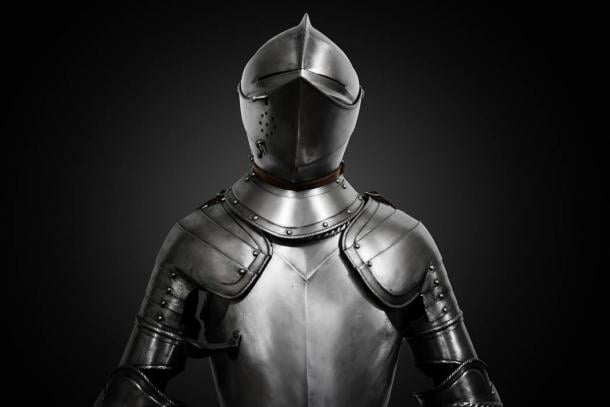
Old metal knight armor on a black background. (Ivan Kurmyshov /Adobe Stock)
Ashor the King Killer and Priest Savior
The origin of Black Knights is closely linked to the legend of Ashor, a knight who had remained skilled and strong, despite his advanced age, and who specialized in the killing of kings and other nobles. Sometime around the 13th or 14th century there was a king with a powerful enemy – a king of another land who oppressed his people.
Desperate to defeat his opponent, the good king sent a message calling Ashor to his court. One night, the king woke up to find Ashor near his bed. The assassin had entered his castle without detection – proving his skill.
Ashor asked the king who he needed to kill and the king gave his order. Ashor accepted the task, but said that he would first check the king’s claims that his enemy was an evil oppressor. Ashor entered the fortress city of the king’s enemy, and witnessed for himself the cruelty of the ruler; his task to assassinate the king would proceed as planned.
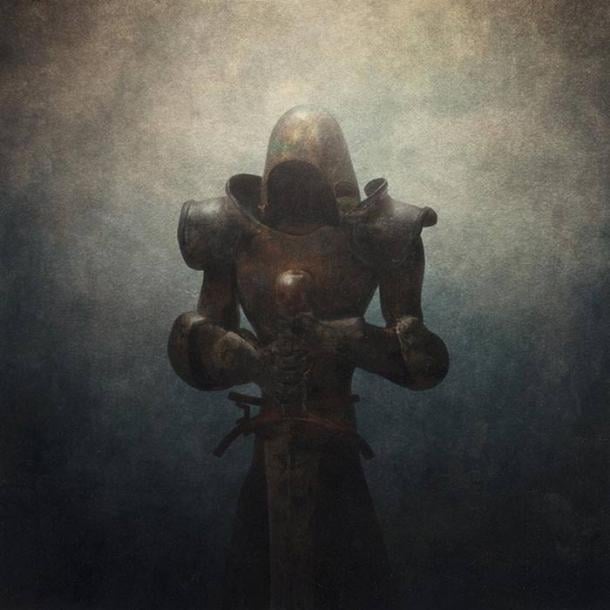
‘The Black Knight.’ (theflickerees / deviantart)
Ashor discovered that an old priest who had once risen up against the cruelty of the evil king was being held prisoner in the dungeon. After fulfilling his order to kill the king, Ashor, who was moved by the priest’s story, decided to free him from the prison. He entered the dungeon and found the man in a very bad state.
The imprisoned priest was very weak and could barely stand. Unfortunately, the priest proved to be a burden, making it difficult for Ashor to escape. While carrying the old man out of the dungeon, the knight was injured. Nevertheless, the two got up on a horse, escaped the city, and made for the woods.
The black knight had freed the city from its evil king and he had escaped. However, with people in pursuit, Ashor understood that he could not tend to his wounds in time and he descended from the horse, telling the priest that he would not slow him down and he must continue. The priest thanked him, gave him his blessing and left as instructed.
The Fight for the Legendary Knight’s Soul
Ashor waited for his end near a tree. Soon, as blood left the knight’s body, a demon appeared before him telling the knight that his soul belonged to him and he had come to claim him. Before the demon could take Ashor’s soul, an angel also appeared, saying that the knight’s soul belonged to him and that he had come to take it with him to Heaven. Apparently, the knight’s good deeds had been just a little more numerous than his bad ones and he had been forgiven.
As the two entities were getting ready to clash over the human’s soul, a third entity appeared. At this time, the angel and the demon had stopped fighting as if they had been frozen. The third entity had no form.
In order to be visible, it had appeared as a figure in a black cloak. However, nothing could be seen coming out of the cloak: no hands, no feet, no face. This third entity was Il Separatio, the Anonymous one, the keeper of universal balance, the one who cannot be named.
Il Separatio Confronts the Black Knight
Anonymous is the personification of perfect neutrality. He is neither good, nor evil, he is beyond all divisions. Il Separatio spoke and said that the knight had done just as much good as he had done evil. Therefore, neither the angel nor the demon could claim his soul. He belonged to Il Separatio. At that moment, both the angel and the demon disappeared and Anonymous turned to the knight.
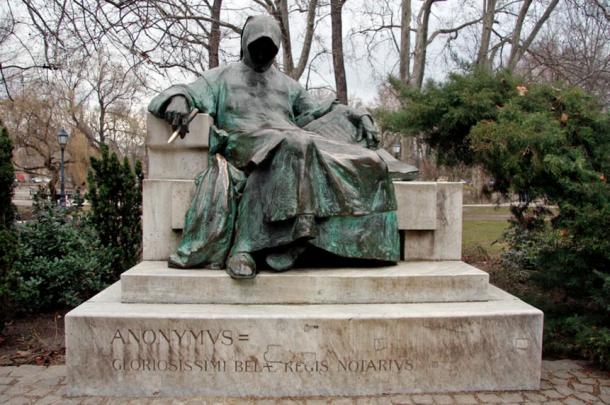
A statue of the Anonymous One, Il Separatio, Budapest, Hungary. (Vajdahunyad Castle)
Ashor’s wounds had been healed. He got up and talked to Il Separatio. The entity told Ashor that he had become free and no longer belonged to ‘the system’. He was outside it, beyond it. Il Separatio told the knight that he could do whatever he wanted, that he could live for as long as he wanted, that he could travel anywhere (including other planets). When he was to become bored of all of this, then he was to call upon Il Separatio to stand before him once again and tell him about the true purpose of their existence.
- Journey to Knighthood: The Hidden Steps of Becoming a Medieval Knight
- Advances in Medieval Knight Armor Could Not Match Weapon Technology!
- The Knights of Blanik Mountain Are Ready to Face the Darkest Hour
Ashor was told that, as he was no longer part of the system, his actions no longer mattered for the world. Should he do good deeds, other would do bad deeds and the universal balance would remain unchanged. Should he do bad deeds, others would do good deeds and, again, the balance of the universe would remain the same.
According to legend, Il Separatio disappeared once he finished his explanation, while the knight Ashor still lives among humans today. It is said that he had chosen to do good deeds as a black knight, even though his actions no longer mattered for the world. Ashor, the Immortal, remains the prototype for the image of the black knight.
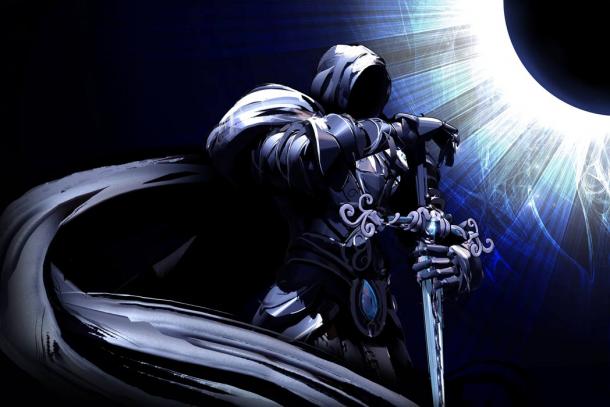
A black knight with a long cloak stands holding a sword against a blue Eclipse. (warmtail /Adobe Stock)
Top Image: Example of a Black Knight. Source: Warpedgalerie /Adobe Stock
By Valda Roric
References:
Medieval Chronicles (2019) ‘The Black Knight.’ Medieval Chronicles. Available at: https://www.medievalchronicles.com/medieval-knights/famous-medieval-knights/the-black-knight/
Valda Roric – “Loki – The Trickster Unleashed”
















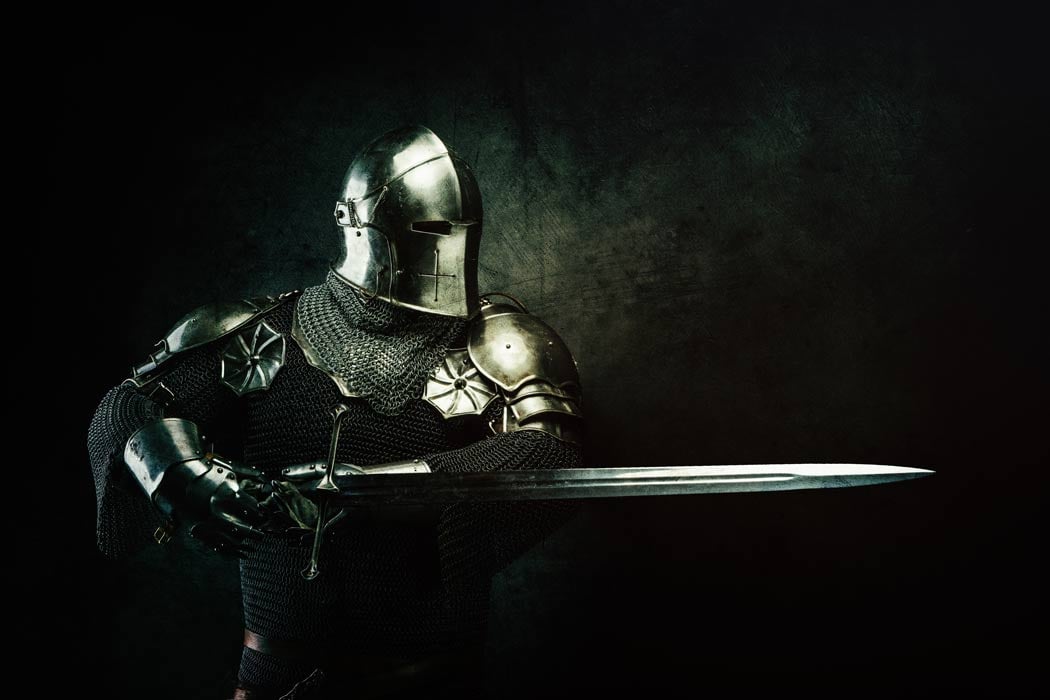

Comments
Just to clarify, they called people ‘black’ back then, not for the color of their skin, but for the color of their hair. Let’s not ignore that the Sumerians called themselves the ‘black-headed people’, and many say they were originally sired by the Annunaki, who seemed to have been alien – arrived on Earth from another planet just when the Ice Age was winding down. They would NOT have called themselves THE black-headed people were there other black-headed people on Earth before them. The ancient Greeks, who were fair-haired, probably also called them “black”, but definitely did call them ‘semites’, meaning semi-man or a product of a fair-haired woman and an Annunaki man, and this explanation is confirmed by ancient Sumerian texts.
Black skinned people of those times in the areas of Sumerian/Persian conquest were probably rare – not much extant evidence for their prevalence. Seems they were still largely relegated to the sub-Saharan jungles. But their lineage is a mystery, as they do have some unique DNA that is found neither in white nor semitic people.
Nobody gets paid to tell the truth.
While “Separatio” is Latin, “Il” is Italian. Given the dichotomy that exists within Christianity, there’d be no room for a third contender. There’s also nothing between light and darkness, hence dichotomy. A third figure doesn’t mesh with Christian theology. It’s also asinine to suggest this figure exists as separate from any manifestation of Death, making them wholly redundant. “Sith” is a generic Gaelic term for what we’d call “fairies” in today’s world; there’s no reason why it would be used to describe enigmatic black knights, unless you’re retroactively trying to assert that George Lucas pulled his use of the word from them, because prior to Star Wars nobody thought of “Sith” as black-armor-clad warriors with special swords.
Either way, you’re suggesting knights adopted a Gaelic term for magic beings while serving a figure with a Latin name all so they could operate as perfect assassins against nameless despots.
Are you sure they weren’t wearing white robes and using wrist-mounted blades?
I was looking up the myth & history of the Black Knight some time (years) ago. Nothing other than a Wikipedia page that stated the minor mentions in the various Arthurian tales & then nothing until Walter Scotts ‘Ivanhoe’ where there is a black knight who helps the title charater. This same Black Knight is later revealed to be King Richard the Lionheart. So in 20th pop-culture the black knight appears mostly as a villian but at times a hero (as both in the Marvel Comics Universe). The only historical ‘Black Knights’ were Late Medieval Men-At-Arms/Mercenaries who painted their armor black to prevent rusting. Nothing on the above Ashor, his deeds, nor of this Il Separatio’s interference in Ashor’s fate. Ashor seems to be a contemporary creation not an actual historical myth. The only reality seems to be that stature of Il Separatio in Budapest Hungary.
I liked this article and your other one also. That statue from Hungary is great. He looks like the grim reaper.
Interesting. As an avid reader of history, I have never heard this tale. It would be helpful to include the names of the good an evil king and your sources.
Pages